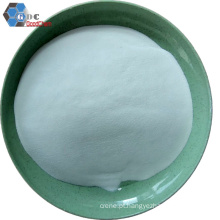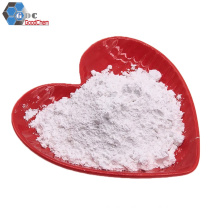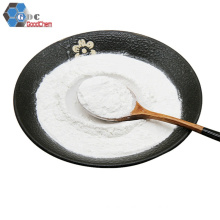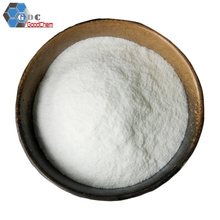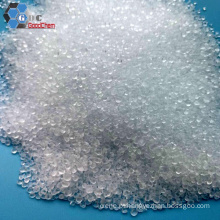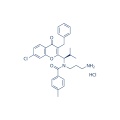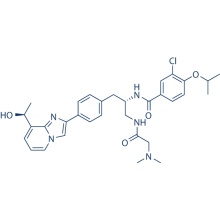.cp_wz table {border-top: 1px solid #ccc; border-left: 1px solid #ccc; } .cp_wz table td {border-right: 1px solid #ccc; borda inferior: 1px sólido #ccc; preenchimento: 5px 0px 0px 5px;} .cp_wz tabela th {border-right: 1px solid #ccc; border-bottom: 1px solid #ccc; preenchimento: 5px 0px 0px 5px;} \ n Peso molecular: \ n 553.52 SB743921 é um inibidor da proteína do fuso da cinesina (KSP) com Ki de 0,1 nM, quase sem afinidade para MKLP1, Kin2, Kif1A, Kif15, KHC, Kif4 e CENP- E. Fase 1/2. \ N Atividade biológica O Ki de SB 743921 para KSP humano e de camundongo é 0,1 nM e 0,12 nM, respectivamente, enquanto o Ki de SB 743921 para outras cinesinas incluindo MKLP1, Kin2 é mais de 70 μM. SB 743921 bloqueia a montagem de um fuso mitótico funcional, causando assim a parada do ciclo celular na mitose e subsequente morte celular. SB-743921 melhorou a potência em relação ao ispinesibe em ensaios bioquímicos e celulares. SB-743921 é maior eficácia in vivo contra a leucemia P388. SB-743921 tem eficácia significativa em um amplo espectro de modelos de tumor que diferem dos taxanos. SB-743921 mostrou ter atividade contra xenoenxertos de tumor humano avançado Colo205 (regressões completas), MCF-7, SK-MES, H69, OVCAR-3 (regressões completas e parciais) e HT-29, MX-1, MDA- MB-231, A2780 (retardo do crescimento do tumor). SB-743921 não causa a neuropatia frequentemente associada aos agentes tubulínicos. Ensaio de cinase de protocolo (apenas para referência): [2]
|
Biochemistry assay
|
The motor domains of KSP (amino acids 1–360) is expressed as in Escherichia coli BL21(DE3) as COOH-terminal 6-his fusion proteins. Bacterial pellets are lysed in a microfluidizer with a lysis buffer [50 mM Tris-HCl; 50 mM KCl, 10 mM imidazole, 2 mM MgCl2, 8 mM β-mercaptoethanol, 0.1 mM ATP (pH 7.4)], and proteins are purified using Ni-NTA agarose affinity chromatography, with an elution buffer consisting of 50 mM PIPES, 10% sucrose, 300 mM imidazole, 50 mM KCl, 2 mM MgCl2, mM β-mercaptoethanol, and 0.1 mM ATP (pH 6.8). Steady-state measurements of ATPase activity are performed with a pyruvate kinase–lactate dehydrogenase detection system that coupled the appearance of ADP with oxidation of NADH. Absorbance changes are monitored at 340 nm. All biochemical experiments are performed in PEM25 buffer [25 mM Pipes/KOH (pH 6.8), 2 mM MgCl2, 1 mM EGTA] supplemented with 10 μM SB 743921 for experiments involving microtubules. Rates of ADP release are measured in a stopped-flow apparatus; the decrease in fluorescence of MANT-ATP is monitored. Rates of Pi release are measured in a stopped-flow apparatus, using bacterial phosphate binding protein modified with 7-diethylamino-3-((((2 maleimidyl)ethyl)amino)carbonyl)coumarin (MDCC) dye. Ki estimates of KSP inhibitors are extracted from the dose–response curves, with explicit correction for enzyme concentration. Tubulin polymerization by measuring changes in absorbance at 340 nm is monitored. The assay is performed in 100-μL volumes in 96-well half-area microtiter plates, using a microplate reader with the incubation temperature set at 37 °C.
|
Ensaio de células: [2]
|
Cell lines
|
HeLa cells
|
|
Concentrations
|
~1 μM
|
|
Incubation Time
|
24 hours
|
|
Method
|
All cells including HeLa cells are cultured in 10% FCS in RPMI 1640 in 5% CO2. We assessed 48-hour growth inhibition by serial dilution of SB 743921 relative to DMSO-treated cells in 96-well microtiter plates, using 3-(4,5-dimethylthiazol-2-yl)-5-(3-carboxymethoxyphenyl)-2-(4-sulfophenyl)-2H-tetrazolium. Cell growth is represented as the ratio of absorbance of treated cells to DMSO control, plotted by concentration and fitted to a four-parameter curve. Concentrations at which cellular growth is inhibited by 50% are extrapolated from the curve fit. The DNA content of HeLa cells cultured in the presence or absence of 1 μM SB 743921 for 24 hours is assessed by propidium iodide staining and flow cytometry. Immunofluorescence images are collected of HeLa cells treated for 24 hours with 1 μM SB 743921, fixed with 2% formaldehyde, permeabilized, and stained with DM1-α, anti-γ-tubulin, and 1 μg/mL 4′,6-diamidino-2-phenylindole, and with Alexa 488 secondary goat antirabbit IgG and Rhodamine-X goat antimouse IgG. Images are collected with a DeltaVision Restoration Microscopy System at a magnification of ×600. Z stacks (0.2 μm) are collected, and out of focus information is removed by constrained iterative deconvolution. Z stacks are then compressed into to a single image plane.
|
Estudo Animal: [1]
|
Animal Models
|
Female BDF1 mice with P388 lymphocytic leukemia cells
|
|
Formulation
|
2% dimethylacetamide + 2% Cremophor EL + 96% acidified water [pH 5.0]
|
|
Dosages
|
7.5 mg/kg- 30 mg/kg
|
|
Administration
|
Administered via i.p.
|
|
Solubility
|
Saline pH5.0,
30 mg/mL
|
|
* Please note that Selleck tests the solubility of all compounds in-house, and the actual solubility may differ slightly from published values. This is normal and is due to slight batch-to-batch variations.
|
Conversão de diferentes modelos de animais com base em BSA (valor com base em dados das diretrizes preliminares da FDA)
|
Species
|
Baboon
|
Dog
|
Monkey
|
Rabbit
|
Guinea pig
|
Rat
|
Hamster
|
Mouse
|
|
Weight (kg)
|
12
|
10
|
3
|
1.8
|
0.4
|
0.15
|
0.08
|
0.02
|
|
Body Surface Area (m2)
|
0.6
|
0.5
|
0.24
|
0.15
|
0.05
|
0.025
|
0.02
|
0.007
|
|
Km factor
|
20
|
20
|
12
|
12
|
8
|
6
|
5
|
3
|
|
Animal A (mg/kg) = Animal B (mg/kg) multiplied by
|
Animal B Km
|
|
Animal A Km
|
Por exemplo, para modificar a dose de resveratrol usada para um camundongo (22,4 mg / kg) para uma dose baseada na BSA para um rato, multiplique 22,4 mg / kg pelo fator Km para um camundongo e, em seguida, divida pelo fator Km para um rato. Este cálculo resulta em uma dose equivalente de rato para o resveratrol de 11,2 mg / kg.
|
Rat dose (mg/kg) = mouse dose (22.4 mg/kg) ×
|
mouse Km(3)
|
= 11.2 mg/kg
|
|
rat Km(6)
|
Informação Química
|
Molecular Weight (MW)
|
553.52
|
|
Formula
|
C31H33N2O3.HCl
|
|
CAS No.
|
940929-33-9
|
|
Storage
|
3 years -20℃Powder
|
|
6 months-80℃in solvent (DMSO, water, etc.)
|
|
Synonyms
|
|
|
Solubility (25°C) *
|
In vitro
|
DMSO
|
111 mg/mL
(200.53 mM)
|
|
Water
|
22 mg/mL
(39.74 mM)
|
|
Ethanol
|
111 mg/mL
(200.53 mM)
|
|
In vivo
|
Saline pH5.0
|
30 mg/mL
|
* <1 mg/ml means slightly soluble or insoluble.
* Please note that Selleck tests the solubility of all compounds in-house, and the actual solubility may differ slightly from published values. This is normal and is due to slight batch-to-batch variations.
|
|
Chemical Name
|
(R)-N-(3-aminopropyl)-N-(1-(3-benzyl-7-chloro-4-oxo-4H-chromen-2-yl)-2-methylpropyl)-4-methylbenzamide hydrochloride
|
Calculadora de molaridade Calculadora de diluição Calculadora de peso molecular
Grupo de Produto : Sinalização Citoesquelética > Inibidor de Cinesina
